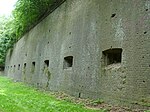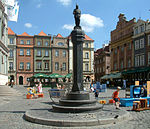Poznań Fortress

Poznań Fortress, known in German as Festung Posen (Polish: Twierdza Poznań) was a set of fortifications in the city of Poznań (German: Posen) in western Poland, built under Prussian rule in the 19th and early 20th centuries. It represents the third largest system of its kind in Europe. The first set of fortifications was a tight defensive ring around central Poznań, including the main citadel called Fort Winiary (now the Cytadela park). Construction of these fortifications began in 1828. Later, beginning in 1876, an outer defensive ring was built around the perimeter of the city, consisting chiefly of a series of "forts", which mostly still survive. The term Festung Posen was also used by the Nazi German occupiers during the Red Army's advance in the closing phases of the Second World War, to refer to Poznań's status as one of the "strongholds" (Festungen) which were to be defended at all costs. It fell in the Battle of Poznań (1945), with Fort Winiary the last point of resistance.
Excerpt from the Wikipedia article Poznań Fortress (License: CC BY-SA 3.0, Authors, Images).Poznań Fortress
Poznań Stare Miasto
Geographical coordinates (GPS) Address Nearby Places Show on map
Geographical coordinates (GPS)
| Latitude | Longitude |
|---|---|
| N 52.4219 ° | E 16.9352 ° |
Address
Obszar Natura 2000 Fortyfikacje w Poznaniu
61-663 Poznań, Stare Miasto
Greater Poland Voivodeship, Poland
Open on Google Maps











